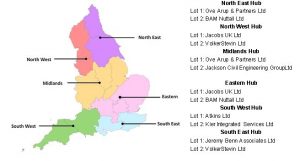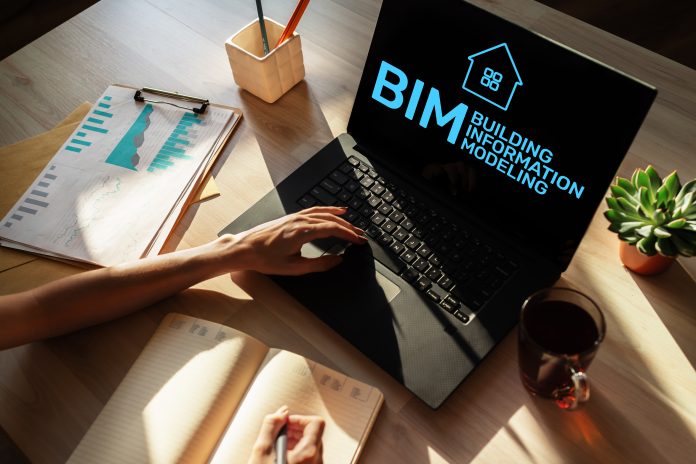Institution of Civil Engineers President’s Future Leader alumni and project manager and BIM lead for the Environment Agency, Ayo Sokale, shares how its new Collaborative Delivery Framework is adopting BIM as business as usual
My name is Ayo Sokale. I am project manager and the BIM lead for the Environment Agency’s Collaborative Delivery Framework Eastern Hub.

My background is as a civil engineer and I took part in the Environment Agency’s training scheme, undertaking internal and external placements to support my development. During this, I project managed the Abingdon Flood Alleviation Scheme, which delivered a flood wall that protected five properties from flooding, and was assistant project manager on Oxford Flood Alleviation Scheme, where I led on assurance and approvals.
I gained invaluable site experience in the role of ECC site supervisor for the Tull Way Flood Alleviation Scheme. I also managed and designed projects such as a bypass channel to improve fish migration and flood embankments. I worked on the UK government’s top 40 national infrastructure projects and one of world’s largest flood risk management programmes, the Thames Estuary Asset Management 2100.
My BIM journey
My BIM journey started in 2016 when I was working on the Oxford Flood Alleviation Scheme delivering training to support the project team adhering to BIM Level 2, specifically file naming document uploaded to our common data environment.
In my current role as BIM lead, I lead the project delivery team in adopting the BIM Level 2 changes, improving the organisational culture, creating a community of BIM champions to achieve this aim and measure BIM success.
The Collaborative Delivery Framework
The Environment Agency’s Collaborative Delivery Framework (CDF) is part of the Next Generation Supplier Arrangements (NGSA). The framework allows the supplier and client to work collaboratively in long-term teams with the aim of increasing efficiency and value for money as we work to mitigate climate change and meet our target of protecting 300,000 homes from coastal erosion and flooding by 2021.
BIM in a collaborative culture
In this new collaborative way of working, BIM is still at the heart of project delivery.
We are using the BIM protocol, Employers Information Requirements and the Information Delivery Plan (IDP) as commercial tools. They set out the Environment Agency’s data and Information Requirements to the supplier. During the framework contracting process, the suppliers respond with their organisation BIM Execution Plan (BEP). This is also produced by the suppliers on a project level and show how the supplier will manage data and information with BS and PAS 1192 standards.
The application of BIM in a collaborative culture will make positive impact on “real world” project delivery in a number of ways:
- Clarity of the supplier expected deliverables.
- Reduced the challenges developing the scope.
- Encourage use of new technologies throughout the project cycle.
- Allow standardisation between the supplier and client.
- Provide the client confidence in the information transmitted by the supplier.
- Informs clients’ effective decision making.
- Allow project to be delivered more effectively.
BIM at the Environment Agency
The Environment Agency’s BIM journey began as a result of the government’s mandate for Level 2 adherence as a minimum by 2016. The EA now see BIM as a tool that would allow for better information management, which is critical for asset owners like ourselves.
BIM is very important to us at the Environment Agency because we manage over 40,000 FCERM assets in England and BIM allows us to maintain essential information on our assets, which enables us to be more effective asset owners. This is vital as we have a statutory role for safeguarding people and property from flooding.
The Environment Agency continually strives to become a more efficient and effective organisation. An example of this would be following the 2013-14 winter floods, we have improved our knowledge and understanding of our asset condition and resilience by collecting more information to inform decision making on: replacement, repair, refurbishment and controlled natural deterioration.
The Environment Agency’s BIM vision
The long-term vision is to make BIM basics stick and for it to be simply how we do things. On achieving that, we can then work towards building a digital twin – data as an asset in its own right. Another valuable outcome is to share openly available asset information and build partnerships.
The challenge: There is a negative dialogue when BIM is mentioned, with many people viewing the BIM requirements as a barrier to project delivery as opposed to the tool that facilities it.
The solution: To changing the narrative on BIM by making BIM sexy! How? By delivering project level training, undertaking BIM health checks on the project and running BIM challenges to allow the project team to compete for the title of Star BIM project.

Ayo Sokale
Project Manager and BIM Lead
Environment Agency
Ayo.Sokale@environment-agency.gov.uk
www.gov.uk/government/organisations/environment-agency
Twitter: AyoSokale / Envagency
LinkedIn: Environment Agency
YouTube: EnvironmentAgencyTV

















